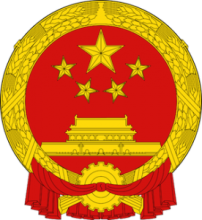Resource information
This Law aims to prevent and control water and soil loss, protect and reasonably utilize water and soil resources, reduce disasters of flood, drought and sandstorm, improve the ecological environment and guarantee sustainable economic and social development.The Law provides for the preparation of water and soil conservation plans made based on the results of water and soil loss investigation and delimitation of key prevention areas and key control areas. To prevent and reduce water and soil loss, local people’s governments at all levels shall take measures such as natural rehabilitation, encourage the planting of trees and grass, enlarge the areas covered by trees and grass and conserve water resources. The Law provides for control measures that shall be taken whenever a production or construction project or any other activity causes water or soil loss.The Law further provides for the monitoring and supervision of water and soil conservation and for legal liabilities.
Implemented by: Water and Soil Conservation Regulation of Zhejiang Province. (2014-09-26)
Implemented by: Water and Soil Conservation Regulation of Liaoning Province. (2014-09-26)
Implemented by: Water and Soil Conservation Regulation of Fujian Province. (2014-05-22)
Implemented by: Water and Soil Conservation Regulation of Guizhou Province of the People’s Republic of China. (2012-11-29)
Implemented by: The Decree No. 120 of the State Council promulgating the Implementing Regulations of the Water and Soil Conservation Law of the People’s Republic of China. (1993-08-01)
Implemented by: Measures of Tianjin Municipality for implementing the Water and Soil Conservation Law of the People’s Republic of China. (2013-12-17)
Implemented by: Measures of the Guangxi Zhuang Autonomous Region for the implementation of the Water and Soil Conservation Law of the People's Republic of China. (2013-07-25)
Implemented by: Measures of the Tibet autonomous region for implementing the Water and Soil Conservation Law of the People’s Republic of China. (2013-07-31)
Implemented by: Measures of the Xinjiang Uygur Autonomous Region for implementation of the Soil and Water Conservation Law. (1997-02-26)
Implemented by: Regulations of Shenzhen Special Economic Zone on Conservation of Water and Soil. (2000-01-02)



